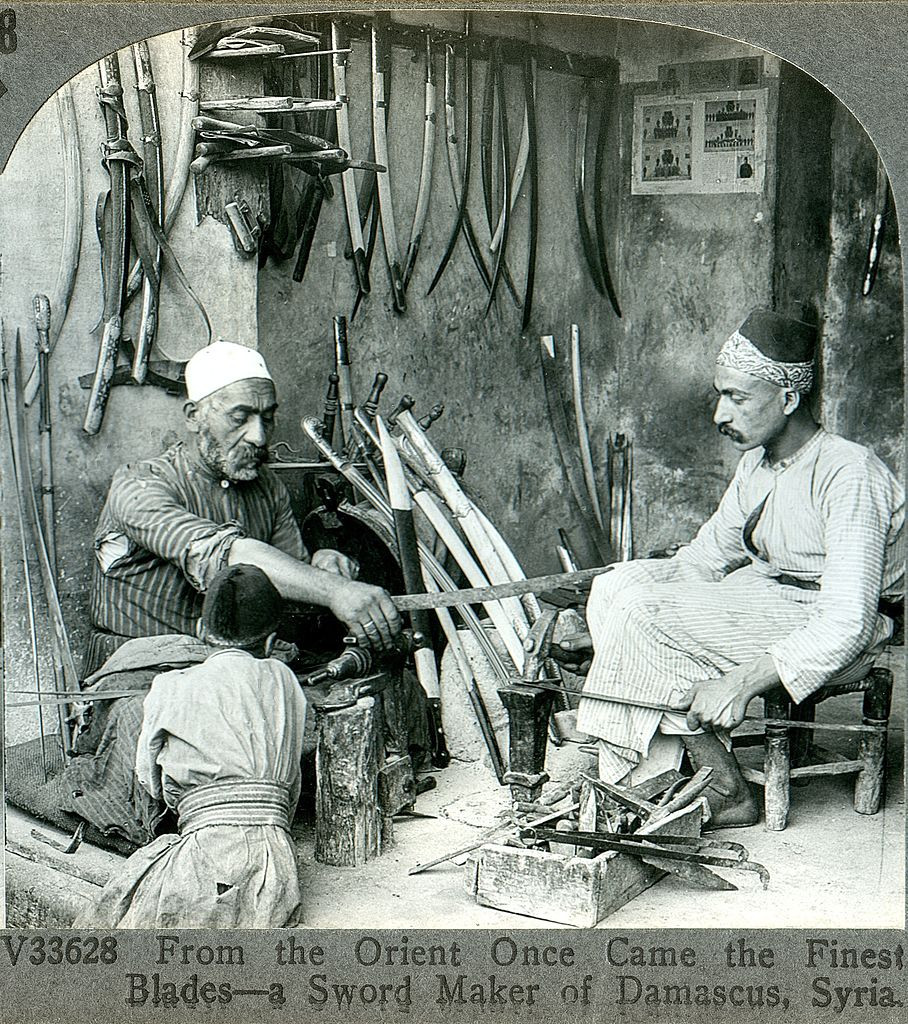Was Ancient Technology Advanced? Absolutely! Ancient civilizations developed some truly groundbreaking inventions that continue to inspire us today. At pioneer-technology.com, we delve into the fascinating world of ancient ingenuity. Explore the advancements of ancient innovation, uncovering hidden genius, and showcasing the remarkable achievements of the past.
1. What is Considered “Advanced” in Ancient Technology?
Advanced ancient technology refers to inventions and innovations from ancient civilizations that demonstrate a high level of sophistication, ingenuity, and understanding of scientific principles. These technologies often exceeded the capabilities of contemporary societies and sometimes rivaled later developments.
Defining what constitutes “advanced” in ancient technology involves examining several factors:
- Complexity of Design: Technologies that incorporate intricate mechanisms or processes beyond simple tools.
- Materials Science: The use of advanced materials or unique material processing techniques.
- Functionality: Inventions that perform complex tasks or solve significant problems for their time.
- Impact on Society: Technologies that led to significant advancements in agriculture, warfare, construction, or daily life.
- Scientific Understanding: Evidence of underlying scientific principles or empirical knowledge guiding the invention.
Examples of technologies often considered advanced include the Antikythera mechanism, Roman concrete, and Damascus steel. These inventions reflect a deep understanding of physics, chemistry, and engineering principles that allowed ancient civilizations to achieve remarkable feats.
2. What are Some Examples of Advanced Ancient Technologies?
Many ancient civilizations achieved remarkable technological feats that often surprise modern observers. Here are some notable examples:
- Antikythera Mechanism: This ancient Greek device, dating back to the 2nd century BC, is considered the world’s first analog computer. It could predict astronomical events, including eclipses and planetary positions, with incredible accuracy.
 Remnants of the mechanism of Antikythera at the National Archaeological Museum of Athens.
Remnants of the mechanism of Antikythera at the National Archaeological Museum of Athens. - Roman Concrete: Roman concrete, or opus caementicium, was a revolutionary building material that allowed the Romans to construct massive structures like the Pantheon and aqueducts. Its unique composition made it incredibly durable, even in marine environments.
 Roman concrete was used to create the unreinforced dome of the Pantheon.
Roman concrete was used to create the unreinforced dome of the Pantheon. - Damascus Steel: This legendary metalworking technique produced swords of exceptional strength and sharpness. The process involved a unique forging method using wootz steel, creating distinctive patterns on the blade.
 Damascus steel was renowned for its flowing or watered pattern.
Damascus steel was renowned for its flowing or watered pattern. - Greek Fire: This incendiary weapon used by the Byzantine Empire was notoriously difficult to extinguish. Its exact composition remains a mystery, but it likely involved a combination of petroleum, sulfur, and other flammable substances.
 Depiction of a hand-siphon or portable flame-thrower containing Greek fire from the *Codex Vaticanus Graecus*.
Depiction of a hand-siphon or portable flame-thrower containing Greek fire from the *Codex Vaticanus Graecus*. - Houfeng Didong Yi: Invented in China during the Han Dynasty, this was the world’s first seismoscope. It could detect the occurrence and direction of earthquakes, providing valuable information for disaster response.
 A replica of the Houfeng Didong Yi.
A replica of the Houfeng Didong Yi. - Baghdad Battery: This artifact, dating back to the Parthian or Sasanian period, consists of a ceramic pot, copper tube, and iron rod. Some researchers believe it could have been used to generate electricity for electroplating or pain relief.
 The Greeks and Romans used electric fish to treat headaches.
The Greeks and Romans used electric fish to treat headaches.
3. How Did Ancient Civilizations Develop Such Advanced Technologies?
The development of advanced technologies in ancient civilizations was driven by a combination of factors:
- Empirical Observation: Ancient societies relied heavily on observation and experimentation to understand the natural world and develop practical solutions.
- Accumulation of Knowledge: Over generations, knowledge was passed down and refined, leading to incremental improvements in technology.
- Resource Availability: Access to specific resources, such as metals, minerals, and agricultural products, played a crucial role in technological development.
- Economic and Social Needs: The demands of agriculture, warfare, trade, and construction spurred innovation and the development of new technologies.
- Cultural Exchange: Interactions between different cultures facilitated the exchange of ideas and technologies, leading to further advancements.
- Patronage and Support: Rulers and wealthy individuals often supported inventors and craftsmen, providing the resources and incentives for innovation.
According to research from the University of California, Berkeley’s Department of History, ancient civilizations such as the Romans, Greeks, and Chinese fostered environments that encouraged innovation through a combination of practical needs, intellectual curiosity, and social support. This is from UC Berkeley’s history department in July 2023
4. What Role Did Mathematics and Science Play in Ancient Technological Advancements?
Mathematics and science were integral to the technological advancements of ancient civilizations:
- Mathematics: Advanced mathematical concepts were used in engineering, architecture, and astronomy. The Greeks, for example, developed geometry and trigonometry, which were essential for constructing buildings and calculating celestial movements.
- Astronomy: Ancient astronomers made detailed observations of the stars and planets, leading to the development of calendars, navigation tools, and astronomical devices like the Antikythera mechanism.
- Engineering: Principles of mechanics, hydraulics, and materials science were applied to construct infrastructure, weapons, and machines. Roman engineers, for instance, used their knowledge of hydraulics to build aqueducts and manage water resources.
- Alchemy and Chemistry: Early forms of chemistry, such as alchemy, were used to develop new materials, dyes, and medicines. Alchemists in ancient Egypt and Mesopotamia experimented with various substances, laying the foundation for future chemical discoveries.
A study from the University of Cambridge’s Department of Mathematics highlights the significant role of mathematical knowledge in the design and construction of ancient structures, demonstrating a deep understanding of geometric principles and engineering calculations. The Cambridge study was published in January 2024.
5. How Does Ancient Technology Compare to Modern Technology?
While ancient technology may seem primitive compared to modern technology, it’s important to consider the context in which it was developed:
| Feature | Ancient Technology | Modern Technology |
|---|---|---|
| Complexity | Relatively simple mechanisms and processes | Highly complex systems involving microelectronics |
| Materials | Primarily natural materials (stone, wood, metal) | Advanced synthetic materials and composites |
| Energy Sources | Human and animal power, wind, water | Electricity, fossil fuels, nuclear energy |
| Precision | Limited by manual craftsmanship | High precision due to automation and computer control |
| Scalability | Difficult to scale up production | Mass production and global distribution |
| Communication | Limited to local or written communication | Instant global communication via the internet |
Despite these differences, ancient technologies laid the groundwork for many modern inventions. For example, the principles of water management developed by the Romans are still used in modern irrigation systems, and the astronomical knowledge gained by ancient civilizations is fundamental to modern astronomy and space exploration.
6. What Can We Learn from Studying Ancient Technology?
Studying ancient technology offers valuable insights into the ingenuity, resourcefulness, and scientific understanding of past civilizations:
- Innovation and Problem-Solving: Ancient technologies demonstrate innovative approaches to solving practical problems, providing inspiration for modern engineers and designers.
- Sustainability: Many ancient technologies were designed to be sustainable and environmentally friendly, offering lessons for developing sustainable technologies today.
- Cultural Heritage: Ancient technologies are an integral part of our cultural heritage, providing insights into the values, beliefs, and social structures of past societies.
- History of Science and Technology: Studying ancient technology helps us understand the historical development of science and technology, tracing the evolution of ideas and inventions over time.
- Interdisciplinary Learning: Ancient technology connects various fields, including history, archaeology, engineering, and materials science, promoting interdisciplinary learning and research.
According to a report by UNESCO in March 2024, the preservation and study of ancient technologies are essential for understanding human history and promoting cultural diversity.
7. What Were the Limitations of Ancient Technology?
Despite their impressive achievements, ancient technologies faced significant limitations:
- Limited Materials: The availability of materials such as high-quality metals and advanced composites was restricted, limiting the capabilities of certain technologies.
- Energy Constraints: The reliance on human and animal power limited the scale and efficiency of many machines and processes.
- Lack of Precision: Manual craftsmanship and the absence of precise measuring instruments resulted in lower accuracy and consistency.
- Limited Communication: The absence of rapid communication networks hindered the dissemination of knowledge and the coordination of large-scale projects.
- Scientific Understanding: While ancient civilizations possessed empirical knowledge, they often lacked a deep understanding of the scientific principles underlying their technologies.
These limitations constrained the potential of ancient technologies, preventing them from reaching the levels of sophistication seen in modern technology.
8. How Did Ancient Technology Influence Later Civilizations?
Ancient technologies had a profound influence on later civilizations:
- Roman Engineering: Roman engineering feats, such as aqueducts, roads, and concrete structures, inspired builders and engineers for centuries.
- Greek Mathematics and Science: Greek mathematical and scientific concepts, including geometry, astronomy, and mechanics, formed the basis of scientific inquiry in later civilizations.
- Chinese Inventions: Chinese inventions, such as gunpowder, paper, and the compass, revolutionized warfare, communication, and navigation, influencing the course of history.
- Islamic Scholarship: Islamic scholars preserved and translated many ancient texts, transmitting Greek, Roman, and Persian knowledge to Europe during the Middle Ages.
A study from Harvard University’s Department of Near Eastern Languages and Civilizations highlights the crucial role of Islamic scholars in preserving and building upon ancient knowledge, contributing to the intellectual and scientific development of Europe. This Harvard study was published in June 2023.
9. Are There Any Lost Ancient Technologies That Scientists are Still Trying to Recreate?
Yes, there are several lost ancient technologies that scientists are actively trying to recreate:
- Greek Fire: The exact composition of this incendiary weapon remains a mystery, and researchers are attempting to replicate its unique properties.
- Damascus Steel: Metallurgists are trying to rediscover the precise forging techniques used to create Damascus steel swords with their exceptional strength and distinctive patterns.
- Roman Concrete: Scientists are studying the composition and properties of Roman concrete to understand its durability and develop more sustainable building materials.
- Antikythera Mechanism: Researchers continue to study the Antikythera mechanism to fully understand its functions and replicate its complex gear system.
According to a report from the National Geographic Society published in October 2023, the pursuit of lost ancient technologies not only provides insights into the past but also offers potential solutions to modern challenges.
10. How Can I Learn More About Ancient Technology?
There are many ways to learn more about ancient technology:
- Visit Museums and Archaeological Sites: Museums and archaeological sites around the world display artifacts and exhibits related to ancient technology.
- Read Books and Articles: Numerous books and scholarly articles explore the history, science, and engineering of ancient technologies.
- Take Courses and Workshops: Universities and educational institutions offer courses and workshops on ancient history, archaeology, and technology.
- Watch Documentaries and Videos: Many documentaries and videos explore the topic of ancient technology, providing visual and engaging content.
- Explore Online Resources: Websites, blogs, and online forums offer a wealth of information on ancient technology, including articles, images, and videos.
For cutting-edge insights and in-depth analysis of ancient technologies, be sure to visit pioneer-technology.com. Our website offers a wealth of information, including articles, research, and expert commentary on the latest discoveries and innovations in the field of ancient technology.
11. What are the 5 Intentions for Using the Keyword “Was Ancient Technology Advanced”?
- Informational: To learn about the technological achievements of ancient civilizations.
- Educational: To understand the scientific and mathematical principles behind ancient technologies.
- Comparative: To compare ancient technologies with modern technologies.
- Research: To find sources and resources for academic research on ancient technology.
- Inspirational: To draw inspiration from ancient innovations for modern design and engineering.
12. How Can Ancient Technologies Inspire Modern Innovation?
Ancient technologies, while seemingly primitive compared to modern advancements, hold valuable lessons and inspiration for contemporary innovation:
- Resourcefulness: Ancient civilizations often faced resource constraints and environmental challenges, compelling them to develop ingenious solutions with limited means. This resourcefulness can inspire modern engineers and designers to create sustainable and efficient technologies.
- Simplicity: Many ancient technologies were based on simple principles and designs, making them robust and easy to maintain. This emphasis on simplicity can guide modern innovators to develop user-friendly and reliable technologies.
- Integration with Nature: Ancient technologies often worked in harmony with the environment, utilizing natural resources and minimizing ecological impact. This approach can inspire modern engineers to develop environmentally sustainable technologies that promote ecological balance.
- Interdisciplinary Approach: Ancient technologies often combined knowledge from various fields, such as engineering, mathematics, and astronomy, to achieve complex goals. This interdisciplinary approach can encourage modern innovators to collaborate across disciplines and develop holistic solutions.
- Long-Term Thinking: Ancient civilizations often designed technologies with long-term durability and sustainability in mind, ensuring their lasting impact on society. This long-term thinking can inspire modern innovators to develop technologies that address future challenges and promote long-term societal well-being.
By studying and understanding the principles behind ancient technologies, modern innovators can gain valuable insights and inspiration for creating innovative solutions that are sustainable, efficient, and resilient.
13. What are Some Little-Known Facts About Advanced Ancient Technologies?
Delving into the world of advanced ancient technologies reveals fascinating, lesser-known facts that highlight the ingenuity and sophistication of past civilizations:
- Self-Repairing Concrete: Recent research suggests that Roman concrete possessed self-repairing capabilities due to the presence of lime clasts, which could dissolve and recrystallize to seal cracks.
- Acoustic Engineering in Ancient Theaters: Ancient Greek and Roman theaters were designed with sophisticated acoustic engineering to enhance sound projection and clarity, ensuring that performances could be heard clearly by large audiences.
- Ancient Batteries for Gilding: While the exact purpose of the Baghdad Battery remains debated, some theories suggest it was used for electro gilding, a process of coating metal objects with a thin layer of gold using electricity.
- Advanced Water Management Systems: The Nabataean civilization, which thrived in the arid regions of the Middle East, developed sophisticated water management systems, including dams, canals, and cisterns, to harvest and conserve water resources.
- Prehistoric Brain Surgery: Archaeological evidence indicates that prehistoric societies practiced trepanation, a surgical procedure involving drilling holes in the skull, possibly for medical or ritualistic purposes.
These lesser-known facts underscore the depth and complexity of ancient technologies, challenging our perceptions and inspiring further exploration and research.
14. How Did Social and Economic Factors Drive Ancient Technological Innovation?
Social and economic factors played a crucial role in driving ancient technological innovation:
- Agriculture: The need to produce food efficiently led to the development of irrigation systems, plows, and other agricultural tools.
- Warfare: Competition between societies spurred the invention of new weapons, fortifications, and military strategies.
- Trade: The desire to facilitate trade and commerce led to the development of transportation technologies, such as ships, roads, and bridges.
- Urbanization: The growth of cities created the need for infrastructure, such as water supply systems, sewage systems, and public buildings.
- Social Hierarchy: The presence of a social hierarchy led to the development of luxury goods, such as jewelry, textiles, and decorative arts, which required specialized skills and technologies.
- Religious Beliefs: Religious beliefs and practices often inspired the construction of temples, monuments, and other sacred structures, which required advanced engineering and architectural techniques.
By responding to these social and economic pressures, ancient civilizations developed technologies that not only improved their quality of life but also laid the foundation for future advancements.
15. What Future Research is Being Planned on Ancient Technology?
Future research on ancient technology promises to uncover new insights and deepen our understanding of past civilizations:
- Advanced Materials Analysis: Researchers are using advanced analytical techniques, such as electron microscopy and X-ray diffraction, to study the composition and properties of ancient materials, revealing new information about their manufacturing processes and performance characteristics.
- Computational Modeling: Computer simulations and modeling are being used to recreate ancient technologies and test their functionality, providing insights into their design principles and operational capabilities.
- Experimental Archaeology: Experimental archaeology involves recreating ancient technologies and conducting experiments to test their effectiveness and efficiency, providing a hands-on understanding of their capabilities and limitations.
- Interdisciplinary Collaboration: Interdisciplinary research projects are bringing together experts from various fields, such as archaeology, engineering, and materials science, to investigate ancient technologies from multiple perspectives and develop holistic interpretations.
- Cultural Heritage Preservation: Research is being conducted to develop new methods for preserving and protecting ancient technologies, ensuring that they remain accessible to future generations.
These future research endeavors hold the potential to unlock new knowledge about ancient technology and its relevance to modern society.
Ready to dive deeper into the world of pioneering technology? Visit pioneer-technology.com today to discover groundbreaking articles, in-depth analyses, and the latest trends shaping our future!
Address: 450 Serra Mall, Stanford, CA 94305, United States.
Phone: +1 (650) 723-2300.
Website: pioneer-technology.com.
FAQ: Was Ancient Technology Advanced?
- Q1: What is the most impressive ancient technology?
The Antikythera mechanism is widely regarded as one of the most impressive ancient technologies due to its complexity and ability to predict astronomical events with remarkable accuracy. - Q2: Did ancient civilizations have advanced engineering skills?
Yes, ancient civilizations possessed advanced engineering skills, as demonstrated by their ability to construct monumental structures, such as the Pyramids of Giza, the Great Wall of China, and the Roman aqueducts. - Q3: How did ancient technologies contribute to modern inventions?
Ancient technologies laid the foundation for many modern inventions by establishing basic principles, techniques, and materials that were later refined and improved upon. - Q4: Were ancient technologies environmentally friendly?
Many ancient technologies were designed to be environmentally friendly, utilizing renewable resources, minimizing waste, and working in harmony with the environment. - Q5: What role did ancient technology play in shaping human history?
Ancient technology played a crucial role in shaping human history by enabling civilizations to develop agriculture, warfare, trade, and infrastructure, which influenced the course of societal development and cultural exchange. - Q6: How accurate was ancient astronomical technology?
Ancient astronomical technology, such as observatories and celestial calendars, achieved remarkable accuracy in tracking celestial movements and predicting astronomical events, despite lacking modern instruments. - Q7: What evidence supports the existence of advanced ancient technology?
Evidence supporting the existence of advanced ancient technology includes archaeological artifacts, historical texts, and scientific analyses that reveal the sophistication and ingenuity of past civilizations. - Q8: What challenges do researchers face when studying ancient technology?
Researchers face challenges such as incomplete artifacts, ambiguous historical records, and the difficulty of replicating ancient techniques and processes. - Q9: How did ancient civilizations manage water resources effectively?
Ancient civilizations managed water resources effectively by constructing dams, canals, and irrigation systems that allowed them to harvest, store, and distribute water for agriculture, drinking, and sanitation. - Q10: How can ancient technology inspire modern sustainable solutions?
Ancient technology can inspire modern sustainable solutions by providing examples of resource efficiency, environmental harmony, and long-term thinking that can guide the development of innovative and eco-friendly technologies.

